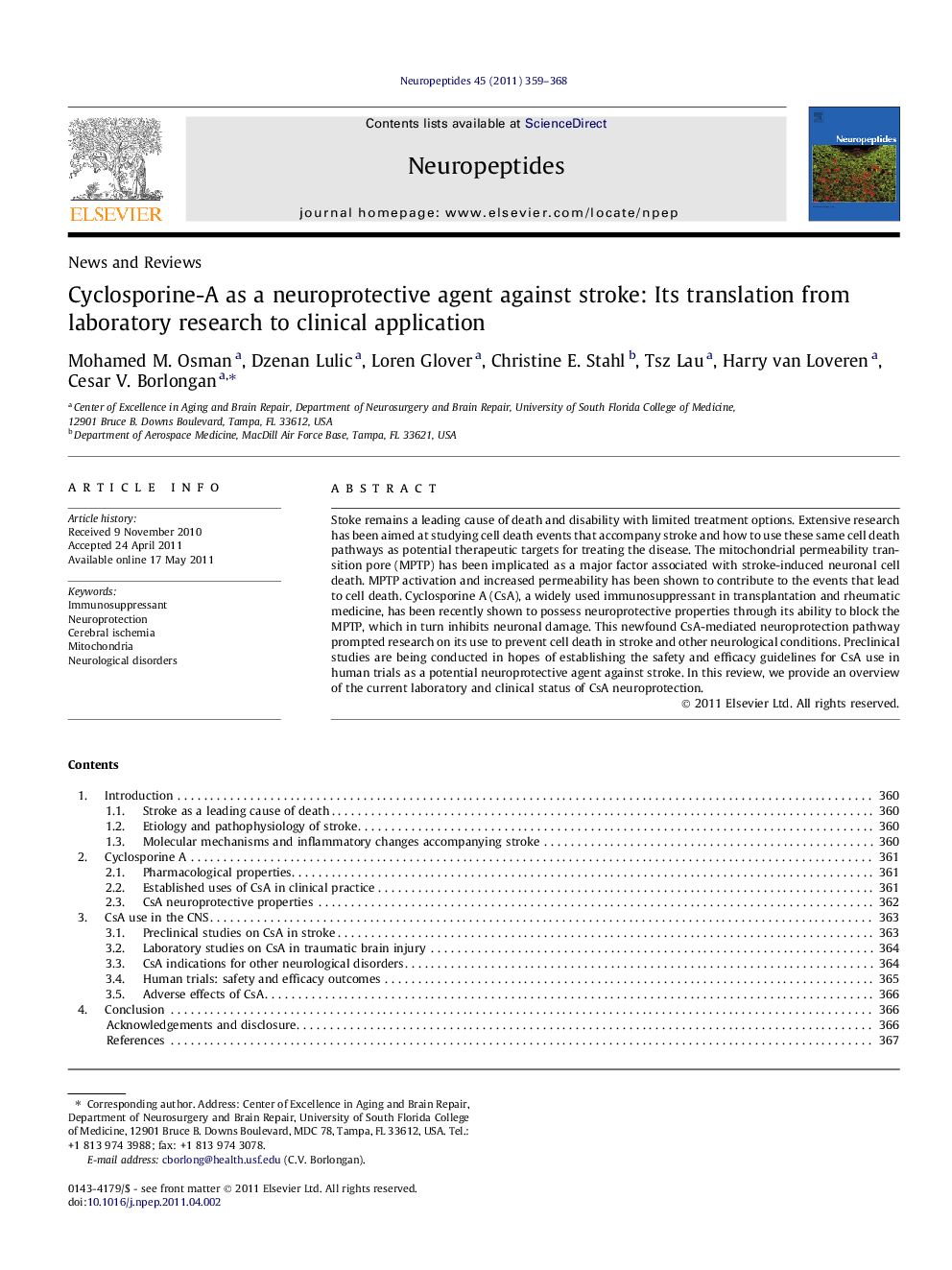| Article ID | Journal | Published Year | Pages | File Type |
|---|---|---|---|---|
| 2808151 | Neuropeptides | 2011 | 10 Pages |
Stoke remains a leading cause of death and disability with limited treatment options. Extensive research has been aimed at studying cell death events that accompany stroke and how to use these same cell death pathways as potential therapeutic targets for treating the disease. The mitochondrial permeability transition pore (MPTP) has been implicated as a major factor associated with stroke-induced neuronal cell death. MPTP activation and increased permeability has been shown to contribute to the events that lead to cell death. Cyclosporine A (CsA), a widely used immunosuppressant in transplantation and rheumatic medicine, has been recently shown to possess neuroprotective properties through its ability to block the MPTP, which in turn inhibits neuronal damage. This newfound CsA-mediated neuroprotection pathway prompted research on its use to prevent cell death in stroke and other neurological conditions. Preclinical studies are being conducted in hopes of establishing the safety and efficacy guidelines for CsA use in human trials as a potential neuroprotective agent against stroke. In this review, we provide an overview of the current laboratory and clinical status of CsA neuroprotection.
